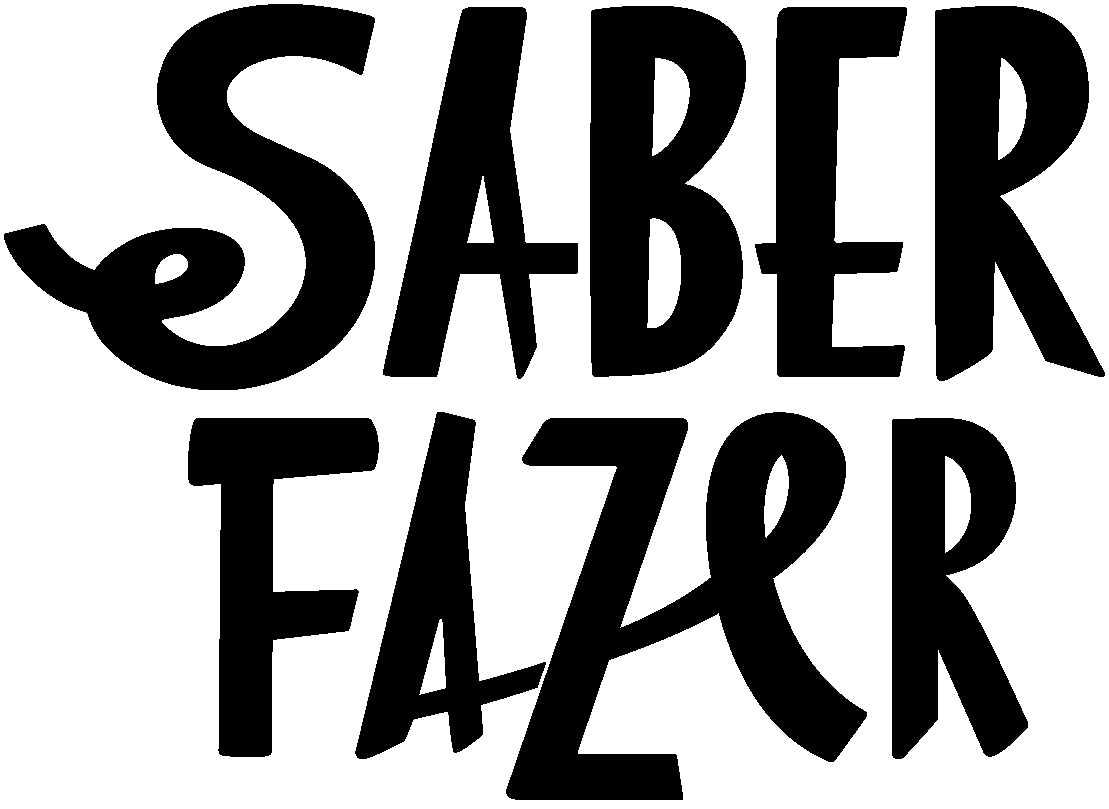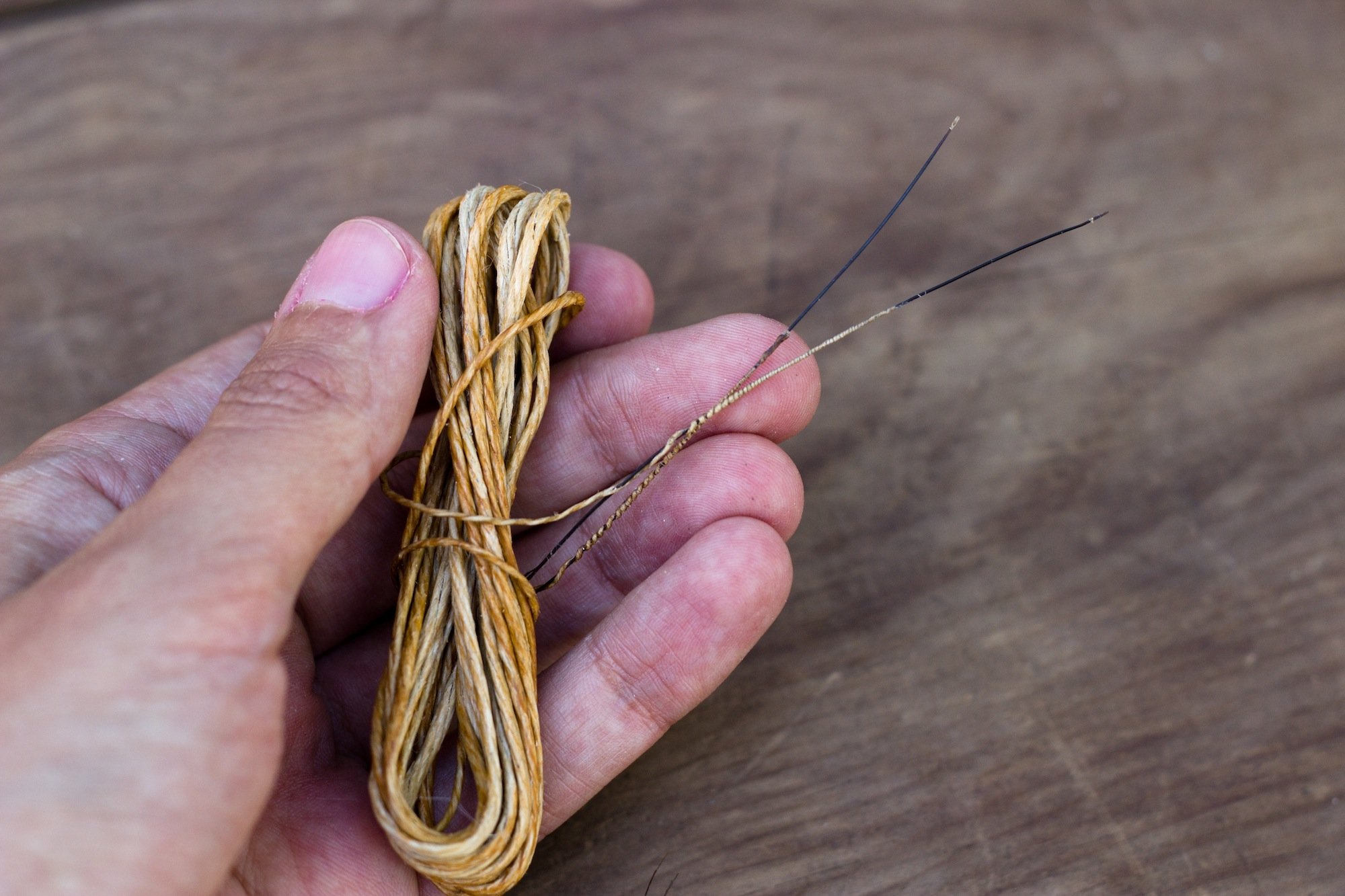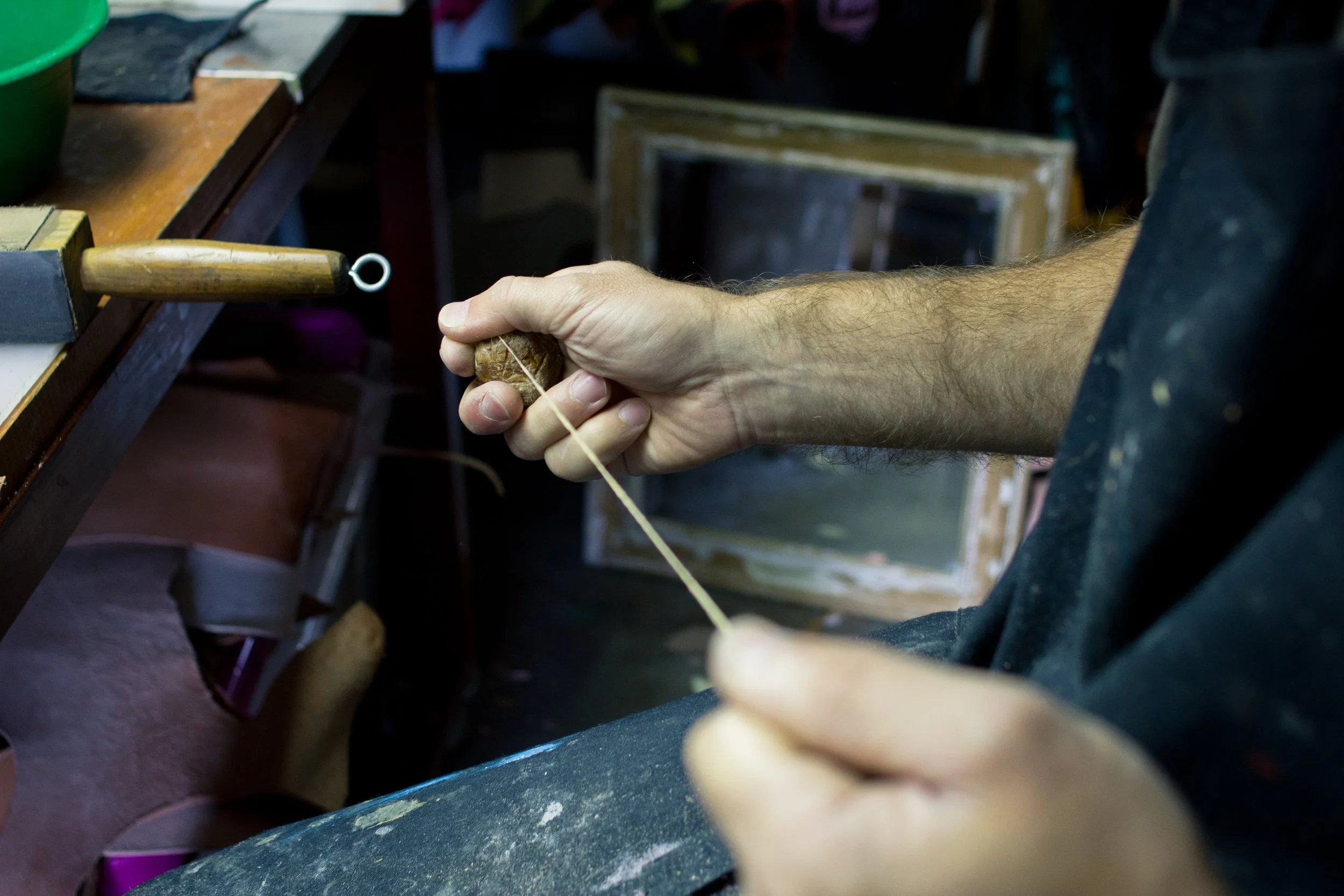Fazer agulhas de Cerda de Javali
Por altura da minha primeira visita, José Machado mostrou-me por alto uma técnica que achei interessante: fazer de raiz uma linha de cânhamo com duas pontas de cerda de javali, utilizada tradicionalmente para coser calçado ou outros artigos em pele.Para quem está habituado a associar costura a agulhas metálicas, a cerda de javali é novidade. A verdade é que é uma excelente agulha para usar num material rígido como o couro, por ser tão forte como flexível, o que a torna perfeita para fazer passagens a 90º, sem criar resistência com a pele.
No vídeo, o Zé explica como se faz esta linha, passo-a-passo.
MATERIAIS E FERRAMENTAS:
- fio de cânhamo
- cera de abelha misturada com pez
- duas cerdas de javali
- sovela
PASSO-A-PASSO:
1. Desfiar o primeiro fio
Para que as cerdas possam ser atadas à linha sem criarem nós que as impeçam de passar pelo furo, cada fio deve ser desfiado de forma a que, nas pontas, não reste mais que uma única fibra de cânhamo. Para fazer isto, o fio é raspado continuamente entre a palma da mão e a perna. As fibras que se quebram são desfiadas.
2. Adicionar os restantes fios
A resistência da linha depende do número de fios que possui. Neste caso, a linha terá 4 fios que serão adicionados um a um, sendo que cada um é desfiado em cada vez, para que a ponta da linha se vá sempre mantendo afiada e com uma fibra única na ponta. Para assegurar isto, cada fio é colocado com cerca de menos 5cm que o anterior, em ambas as pontas, para que a espessura da linha aumente da ponta para o interior.
3. Torcer a linha
Adicionados os 4 fios que vão formar a linha, torna-se necessário torcê-los para que lhe dêem a devida resistência. Para isto, começando por uma das pontas a linha é enrolada no polegar e, ao terminar, é novamente desenrolada. Este movimento vai criar um efeito de espiral que vai dar torção ao conjunto dos 4 fios e, neste caso, deve ser repetido um mínimo de 6 vezes.
4. Finalizar a ponta
Estando a linha torcida, falta finalizar as duas pontas para que estas não se comecem a desenrolar. Repetindo o movimento de esfregar o fio entre a palma da mão e a perna, a ponta da linha é esfregada uma vez no sentido contrário ao da torção, como se estivesse a ser desenrolada, e depois várias vezes no sentido da torção, enquanto é humedecida passando pela boca. Este passo de desenrolar pode parecer contrário ao que se pretende, mas é este movimento que confere à ponta mais força para se enrolar no sentido correcto.
5. Encerar
Estando a linha completamente torcida, é agora encerada com uma mistura de cera de abelhas e pez.
6. Prender as cerdas de javali
Pegando na fibra isolada que ficou na ponta da linha, começa-se a enrolá-la a partir da raiz da cerda até cerca de 2cm – a raiz da cerda de javali irá funcionar como ponta da agulha. Depois esta será enrolada para trás (em direcção à raiz) e, por fim, novamente para a frente, mas bem junta, de forma a que quase não se veja a cerda sob o fio. Finalizando a fase de enrolar o fio na cerda, com a ajuda da sovela faz-se um furo mais ou menos a meio por onde passará a raiz da cerda de javali, dando um pequeno nó que prende a cerda.
A linha de cânhamo, com uma cerda de javali em cada ponta, está assim preparada para começar a coser.







